
8D ASSOCIATION
The 8D Association is dedicated to promoting the history of the railways of South Lancashire, Merseyside and North Cheshire.
The LNWR Widnes Deviation.
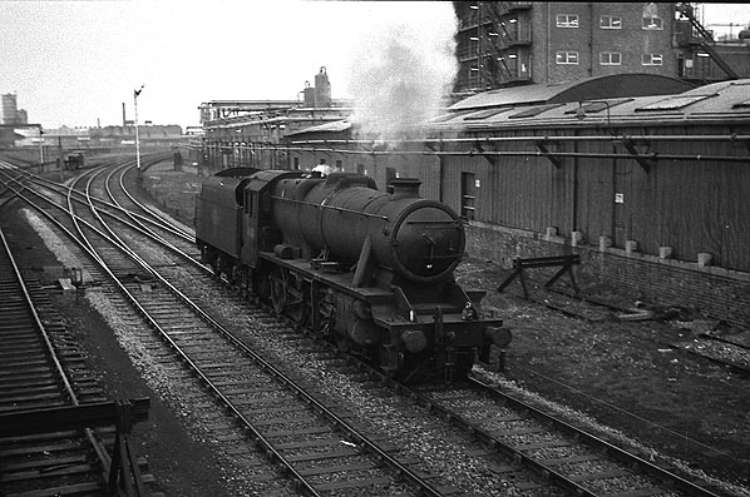
The London & North Western Railway’s (LNWR) Widnes Deviation had its origins in the take over by the LNWR of the St Helens Canal & Railway Company (SHC&RC) on the 1st of September 1864. The LNWR had been keen to absorb the SHC&RC as it had strategic lines that carried lucrative flows of goods in particular coal. However the LNWR inherited a situation at Widnes that was not ideal with regards to the easy movement of traffic. Effectively two lines crossed on the level and there were connecting spurs leading from one to the other. The lines were the original St Helens & Runcorn Gap Railway, which had opened between St Helens and Widnes on the 21st of February 1833, and the line between Garston and Warrington which had opened in two stages, that between Widnes and Garston on the 1st of July 1852 and between Widnes and Warrington on the 1st of February 1853. The St Helens line ran north south and the Garston and Warrington line west to east. They crossed just to the north of Widnes Dock which was the southern terminus for goods of the 1833 line.

Photo by Les Fifoot.
There was a connection that ran north from the St Helens line to west on the Garston line and a connection that ran from east on the Warrington line to south on the St Helens line. The connections allowed trains to travel directly between St Helens and Garston and between Warrington and Widnes Dock.
In close proximity to the flat crossing and connecting chords there were by the mid 1850s numerous sidings and branches into factories. By the time that the LNWR took over there was a great deal of congestion. The solution was to built a new line running west to east that would pass over the St Helens line but at the same time have a connection to it. This would allow through trains to avoid the flat crossing.
As part of its takeover of the SC&RC the LNWR had pledged to spend £100,000 at Widnes carrying out improvements and the money was duly set aside. On the 5th of July 1865 Authorisation was given for the construction of the Widnes Deviation and work started on its construction shortly after.
The Deviation opened to traffic on the 1st of November 1869. On the 1st of March 1870 a new station was opened on the Deviation and from this date all passenger services operated over it. The original lines saw only goods services and the original Widnes Station which had been on the west side of the Waterloo Level Crossing was closed.
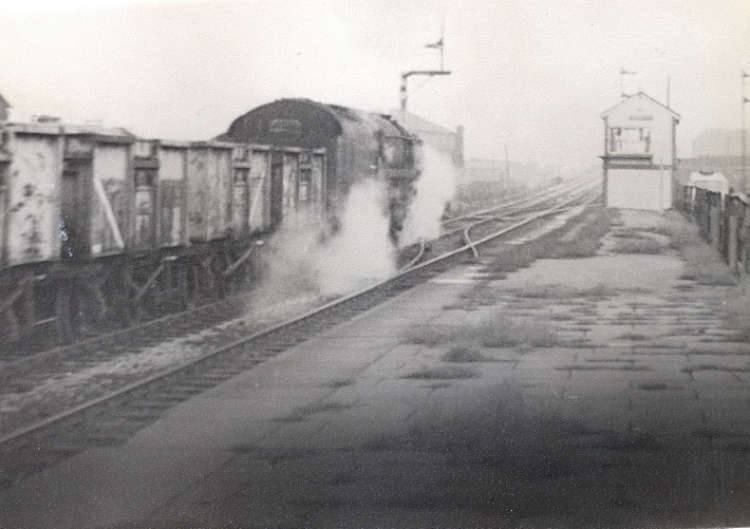
A mineral train on the Deviation passing through the now closed Widnes South station the signal box is Widnes No7 which controlled the spur to the SH & RGR. 2nd January 1968.
The story of the Britain’s first main line railway that was built to carry passengers as well as freight, the Liverpool & Manchester Railway which opened in 1830, is both well known and well documented. During the construction of the Liverpool and Manchester Railway in 1829 a group of local industrialists arranged for a survey to be carried out between Cowley Hill Colliery, which was just to the north of St Helens, and the River Mersey at Runcorn Gap. They wanted to find a location where a dock capable of taking vessels of 30 tons could be constructed. The survey was conducted by Charles Blackner Vignoles who had also undertaken survey work for the Liverpool and Manchester Railway. A route was determined and an estimated cost of £119,980 to build the line was put forward. In January 1830 a prospectus was issued and a subscription list for 1200 shares at £100 each was opened at the Fleece Inn in St Helens. Shares sold rapidly and on the 11th June 1830 Peter Greenall of the famous brewing family was elected Chairman of a Board of ten directors. Whilst all this had been going on authorisation for the St Helens & Runcorn Gap Railway had been sought. A bill for its construction had been posted on the 16th February 1830 and Royal assent was granted on the 29th May 1830.
The St Helens and Runcorn Gap Railway was born. Charles Blackner Vignoles was appointed as engineer to the project on a salary of £650 per year on the 15th June 1830 and shortly afterwards work on the scheme began. Work progressed slowly and not without difficulty and costs overran but on the 28th November 1832 a train carrying coal was able to pass along the entire length of the line from St Helens to Runcorn Gap. Final works were completed and the line was officially opened on the 21st February 1833. Unfortunately the dock was not completed by the opening date much to the annoyance of the board. It took until August 1833 before it could be brought into use and allow the railway to meet its full potential. The Sankey Brook Navigation Canal company had realised that the new railway would be a threat to their business and they had obtained authorisation to build an extension to Runcorn Gap to a point that would be adjacent to the railways dock. This extension opened on the 24th July 1833.
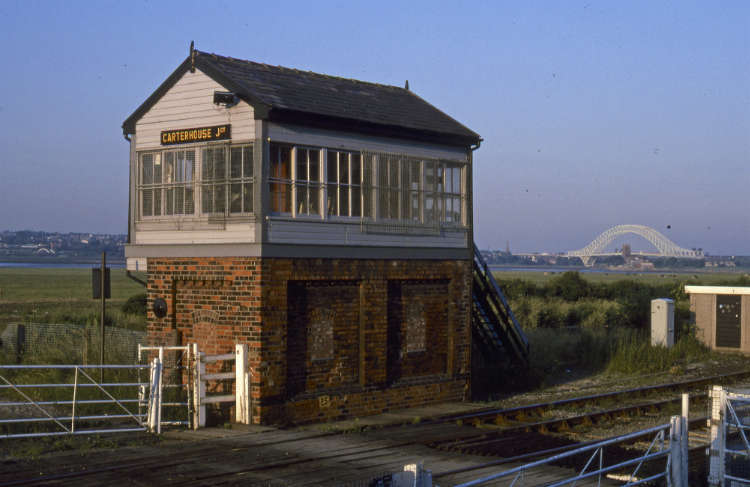
In the 1870s the Deviation would have been used by passenger services running between Liverpool Lime Street and Manchester London Road, along with shorter workings along that route and by the Ditton Junction and St Helens service. Through goods trains that would have outnumbered passenger services tenfold would also have used the Deviation at this time. The entire route between Garston and Skelton Junction became a major goods artery for the LNWR for services that ran east and west.
In 1879 the Manchester, Sheffield & Lincolnshire Railway and the Midland Railway opened a joint line that became known as the Widnes Loop line that ran parallel with the Deviation for much of its length but to the north of it. The two lines were at their closest to the east of Ann Street but there was no connection between them.
In 1923 the Widnes Deviation became part of the London, Midland & Scottish Railway (LMS). The Deviation continued to perform the function for which it was built throughout the LMS years but the locomotive sheds were given a new identification code 8D. Traffic flows of note in the 1930s included Banana trains that ran from Garston Dock eastwards and coal from both the Lancashire and the Yorkshire Coalfields that ran to Garston Dock for export.
On the 1st of January 1948 the Deviation became part of the Nationalised British Railways (London Midland Region). On the 16th of June 1951 the Ditton Junction and St Helens passenger service was withdrawn but the service between Liverpool and Manchester continued to operate although some trains started and ended their journeys at Ditton Junction or at Warrington Bank Quay. An express passenger service, The York Mail which ran from Liverpool Lime Street to York, ran along the Deviation on Sunday Nights. The York Mail did not stop at Widnes Station.
On the 10th of September 1962 regular passenger services, except the York Mail, over the Deviation were withdrawn and Widnes South station was closed. It was used though for Rugby League Specials until 1965. In the early 1960s goods traffic began to decline. Widnes Locomotive Shed closed on the 16th of May 1964. The Widnes Loop which ran parallel to the Deviation closed completely on the 6th of December 1964 except for the goods yard at Tanhouse Lane which was very close to the Deviation at its eastern end. In 1961 a connection had been put in from the St Helens line to Tanhouse Lane which was the first physical link between the former LNWR system and the Widnes Loop. There was still no direct connection from the Deviation to Tanhouse yard at this time but the idea to create one would be revisited two decades later.
On the 4th of November 1968 the line from Ann Street to Widnes Dock, part of the original 1833 line, closed and in March 1969 the original route between Carterhouse Junction and Widnes West Deviation closed as a through route although lines were retained at both ends of the route at Hutchinson Street Yard to the west and between Carterhouse and the flat crossing to the east. These events meant that all traffic now ran over the Deviation and the connecting spur to the St Helens line.
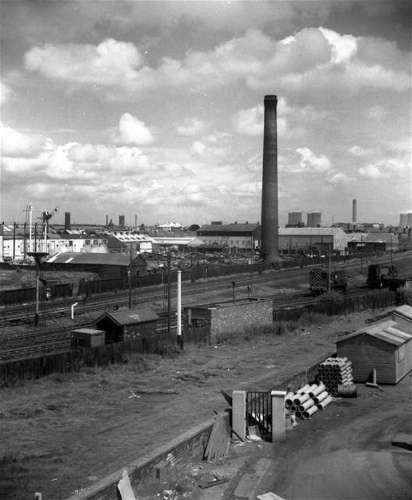
Taken in the 1960’s, the Widnes Deviation at its western end with Hutchinson St Goods Yard where the Class 08’s are standing.
Photo by Gordon Howarth.
Throughout the 1970s the Deviation continued to be used by a variety of goods services. Coal from the Yorkshire pits passed along the line from Carterhouse to West Deviation Junction and from the Lancashire pits it joined the deviation at Widnes Junction having come up from the St Helens line.
Stone products came into Hutchinson Street yard from Hope and were then sent as trip workings to the Everite Works at Farnworth and Bold and to the Blue Circle Cement works at Tanhouse Lane. Car trains from Fords at Halewood travelled east along the line to Warrington and north via the St Helens line.
In the early 1980s British Rail decided that it could close the St Helens line as a through route. The last through trains ran in November 1981. So that Cement could still be delivered to the Blue Circle works a new connection was put in from the deviation to the sidings at Tanhouse Lane. The new connection had its junction with the deviation line to the east of the St Helens line. It was controlled by Carterhouse Junction signalbox and opened on the 18th of April 1982. The opening of the new connection allowed the remaining section of the St Helens line from Widnes Number 7 box to Widnes No 1 to close. Widnes Junction was taken out of use and Widnes Number 7 box was closed.

A Class 60, No 60077 in ‘Mainline’ markings enters the ‘Deviation’ at Carterhose Junction with an empty Fiddlers Ferry PS to Liverpool Bulk Terminal coal train. One part of the the original line can be seen in the foreground which was used in the 1980s by Tarmac as sidings for roadstone deliveries. January 2001.
Traffic declined along the deviation in the 1980s especially after 1984 when a great deal of coal traffic was lost. There was an upturn in the 1990s when many coal trains from Gladstone Dock to Fiddlers Ferry Power Station were routed via the deviation. Hutchinson Street Yard closed at the end of the 1980s and with it West Deviation Box. In 2000 the Blue Circle Cement works was closed and traffic ceased. Carterhouse Box was no longer required and in 2001 it was switched out. It stood in a derelict condition until 2008. The removal of the junction into Tanhouse Lane sidings allowed it to be demolished.
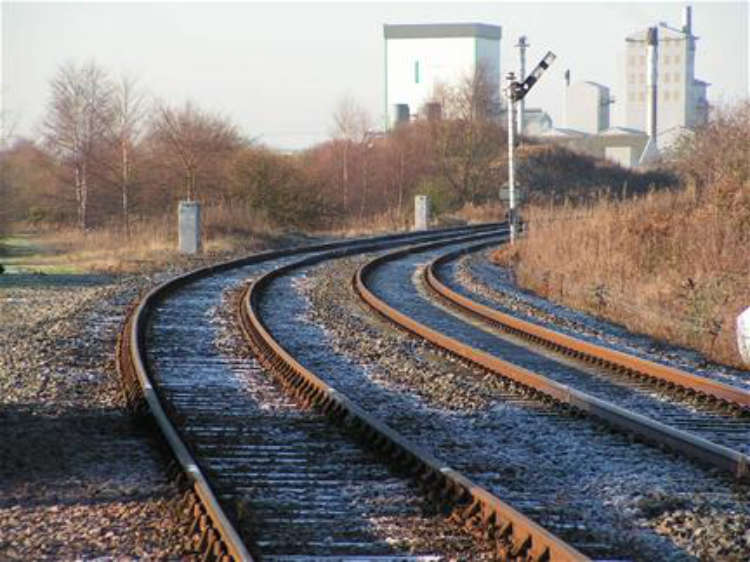
Photo by Paul Wright.
In 2020 the Deviation line is still open although traffic is virtually non-existent. Coal deliveries from Liverpool Bulk Terminal and Ellesmere Port, to Fiddlers Ferry Power Station have now ceased, as the power station officially closed on 31 March 2020. An occasional weekly train of vans, for cleaning, are sometimes be seen travelling from Jaguar Land Rover at Halewood to Arpley (and back) but this service can often run very early (if at all). Currently you may see a DB Cargo train operate to Ditton Foundry Lane loaded with Aluminium from Dollands Moor as well as reverse direction but they are only freight trains that transverse the whole line. In the medium term, the line does have a future as Fidlers Ferry PS has approx currently 15 years worth of Fly Ash on site and some of this may be moved by train but currently no sign of any traffic.
